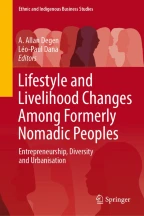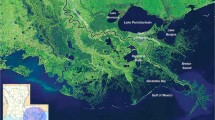The Inuit: From Igloos and Tents and Nomadic Subsistence Hunting and Fishing to Permanent Settlements and Heated Homes

There are over 150,000 Inuit inhabiting the harsh Arctic and sub-Arctic regions. Traditionally, the Inuit were nomadic subsistence hunters and fishers, hunting, whales, walruses, caribou, seals, narwhals, polar bears, muskoxen, birds, and occasionally foxes, and fishing for Arctic char, salmon, polar cod, and bullhead. Dogsleds and kayaks provided transportation and harpoons, spears and bow and arrows were used to hunt animals. Inuit lived in igloos in winter and in tents made of caribou hides in summer. All food and clothing were supplied by hunting and fishing. However, in the 1950s, the Canadian government decided to modernize the Inuit and forced them to abandon their nomadic ways, reside in permanent settlements, and place the children in residential schools to learn English. Clothing and other manufactured items were purchased in stores, and money, unknown in the traditional Inuit economy, became a necessity. Today, the Inuit still hunt and fish, but they travel by snowmobiles and motorboats and use rifles for hunting animals and nets for catching fish. Many Inuit work in mines and oil fields or sell homemade carvings and handicrafts, others have formed cooperatives for fisheries and tourism, while some Inuit have migrated to urban centers in the south. There is a great awareness among the Inuit to preserve their culture, traditions, and language.
This is a preview of subscription content, log in via an institution to check access.
Access this chapter
Subscribe and save
Springer+ Basic
€32.70 /Month
- Get 10 units per month
- Download Article/Chapter or eBook
- 1 Unit = 1 Article or 1 Chapter
- Cancel anytime
Buy Now
Price includes VAT (France)
eBook EUR 117.69 Price includes VAT (France)
Hardcover Book EUR 147.69 Price includes VAT (France)
Tax calculation will be finalised at checkout
Purchases are for personal use only
Similar content being viewed by others

The Finny Tribe: How Coastal, Cosmopolitan New Orleans Satisfied an Appetite for Fish
Article 22 August 2019

Fish and Fishing in the Roman World
Article Open access 05 July 2018

Grilling Clams and Roasting Tubers: Andean Maritime Foodways in the Second Millennium B.C.
Chapter © 2021
References
- Canada Statistics. (2021). Statistics on Indigenous peoples. https://www.statcan.gc.ca/en/subjects-start/indigenous_peoples
- Canadian Geographic. (n.d.). Inuit Nunangat, indigenous peoples atlas of Canada. https://indigenouspeoplesatlasofcanada.ca/article/inuit-nunangat
- Canadian Geographic. (n.d.). Urban Inuit, indigenous peoples atlas of Canada. https://indigenouspeoplesatlasofcanada.ca/article/urban-inuit/
- Cecco, L. (2014). Urban inuit: Nomads from the Arctic find new home in Canada’s capital. http://america.aljazeera.com/multimedia/2014/11/urban-inuitcanada.html
- Dana, L. P., & Anderson, R. B. (2011). The evolution of entrepreneurship in Arviat: The southernmost community of mainland Nunavut. International Journal of Small Business and Entrepreneurship, 14(4), 508–532. ArticleGoogle Scholar
- Dana, L.-P., & Anderson, R. B. (2014). Mining and communities in the Arctic: Lessons from Baker Lake, Canada. International Journal of Entrepreneurship and Small Business, 22(3), 343–361. ArticleGoogle Scholar
- Dana, L.-P., Dana, T. E., & Anderson, R. B. (2005). A theory-based empirical study of entrepreneurship in Iqaluit, Nunavut. Journal of Small Business and Entrepreneurship, 18(2), 143–152. ArticleGoogle Scholar
- Dana, L.-P., Manitok, P., & Anderson, R. B. (2010). The Aivilingmiut people of Repulse Bay (Naujaat), Canada. Journal of Enterprising Communities, 4(2), 162–178. ArticleGoogle Scholar
- Dana, L.-P., Mason, A. M., & Anderson, R. B. (2008). Oil and gas and the Inuvialuit people of the Western Arctic, Canada. Journal of Enterprising Communities, 2(2), 151–167. ArticleGoogle Scholar
- Fediuk, K. (2000). Vitamin C in the Inuit diet: Past and present. MA Dissertation, McGill University, Montreal, Canada. https://escholarship.mcgill.ca/concern/theses/xp68kj14m
- Freeman M A (2023) Inuit. The Canadian Encyclopedia. https://www.thecanadianencyclopedia.ca/en/article/inuit
- Gadsby, P., & Steele, L. (2004). The Inuit Paradox: How can people who gorge on fat and rarely see a vegetable be healthier than we are? Discoverer. https://www.sott.net/article/271146-The-Inuit-Paradox-How-can-people-who-gorge-on-fat-and-rarely-see-a-vegetable-be-healthier-than-we-are
- Glyn, W. (2010). Arctic Labyrinth: The quest for the northwest passage. University of California Press. Google Scholar
- Government of Canada, Statistics Canada. (2022). Indigenous identity by Registered or Treaty Indian status: Canada, provinces and territories, census metropolitan areas and census agglomerations with parts. www12.statcangc.ca.
- Graham, K. A., & Yarhi, E. (2020). Territorial Government in Canada. The Canadian Encyclopedia, Historica Canada. https://www.thecanadianencyclopedia.ca/en/article/territorial-governmentGoogle Scholar
- Hallendy, N. (2020). Inuksuk (Inukshuk). The Canadian Encyclopedia, Historica Canada. https://www.thecanadianencyclopedia.ca/en/article/inuksuk-inukshukGoogle Scholar
- Inuit (2023). New World Encyclopedia, https://www.newworldencyclopedia.org/p/index.php?title=Inuit&oldid=1099563
- Jones, J. S. (2018). Inuit. Encyclpaedia.com. https://www.encyclopedia.com/history/united-states-and-canada/north-american-indigenous-peoples/inuit
- Kikkert, P. (2023). Nunavut. https://www.thecanadianencyclopedia.ca/en/article/nunavut
- Kuhnlein, H. (1991). Traditional plant foods of Canadian indigenous peoples: Nutrition, botany and use. Taylor and Francis. Google Scholar
- Mason, A. M., Dana, L.-P., & Anderson, R. B. (2008). Entrepreneurship in Coral Harbour, Nunavut. Entrepreneurship Innovations, 9(2), 111–120. ArticleGoogle Scholar
- Mason, A. M., Dana, L.-P., & Anderson, R. B. (2009). A study of enterprise in Rankin Inlet, Nunavut: Where subsistence self-employment meets formal entrepreneurship. International Journal of Small Business and Entrepreneurship, 7(1), 1–23. ArticleGoogle Scholar
- Oliver, M. (2021). 41 Historic photos of the Inuit people taken before Canada stamped out their way of life. https://allthatsinteresting.com/inuit-people
- Statistics Denmark (2018).Statistikbanken. https://www.statbank.dk/pxs/201489
- Struzik, E. (2012). As Arctic melts, Inuit face tensions with outside world. Yale Environment, 360. https://e360.yale.edu/features/as_arctic_melts_inuit_face_tensions_with_outside_world#:~:text=The%20rapid%20retreat%20of%20the,%2C%20polar%20bears%2C%20and%20fish
- Tattrie, J. (2015). Nunavut and confederation. The Canadian Encyclopedia, Historica Canada. https://www.thecanadianencyclopedia.ca/en/article/nunavut-and-confederationGoogle Scholar
- United States Census Bureau. (2000). American Indian and Alaska native alone and alone or in combination population by tribe for the United States: 2000. https://www2.census.gov/library/publications/decennial/2000/briefs/c2kbr01-15.pdf
- Williamson, K. J. (2022). Inuit people. Encyclopaedia Britannica. https://www.britannica.com/topic/Inuit-people
- World Factbook. (2018). Greenland. Central intelligence agency. https://www.cia.gov/the-world-factbook/countries/greenland/
Acknowledgments
We thank the Inuit, especially Sam Pitsiulak, Lucy, and Tookay and the hunters and fishers, who provided us with information on the history, lifestyles, and livelihoods of the Inuit.
Author information
Authors and Affiliations
- Desert Animal Adaptations and Husbandry, Wyler Department of Dryland Agriculture, Blaustein Institutes for Desert Research, Ben-Gurion University of the Negev, Beer Sheva, Israel A. Allan Degen
- ICD Business School Paris, Paris, France Léo-Paul Dana
- LUT School of Business and Management, Lappeenranta, Finland Léo-Paul Dana
- Eucalyptus 13, Omer, Israel Lily M. Degen
- A. Allan Degen



